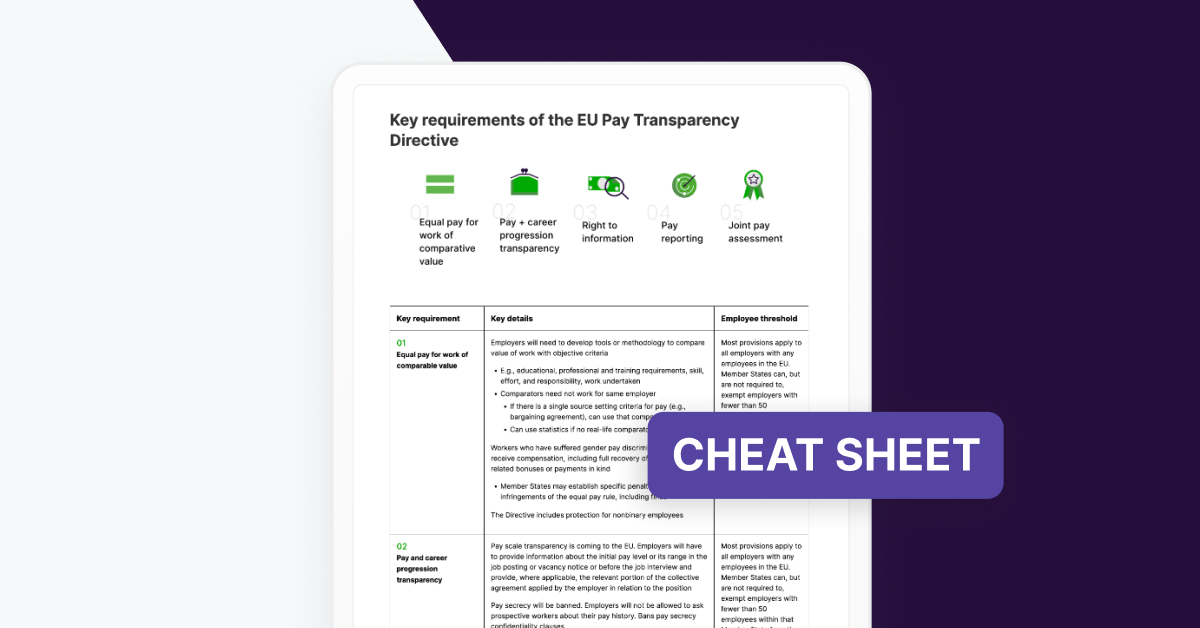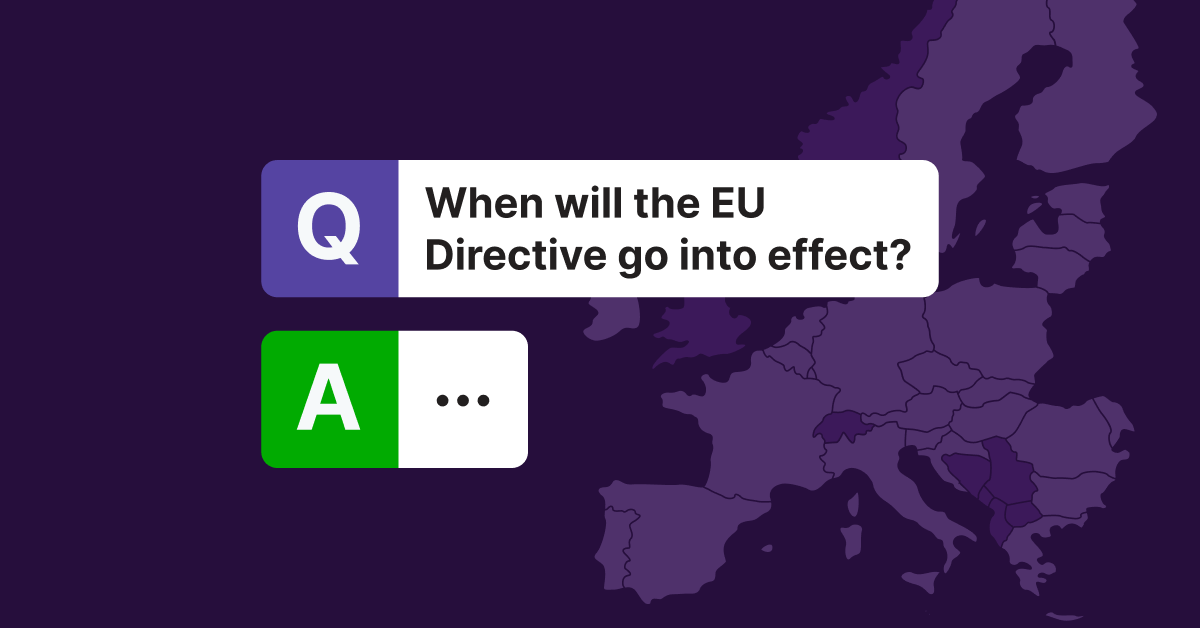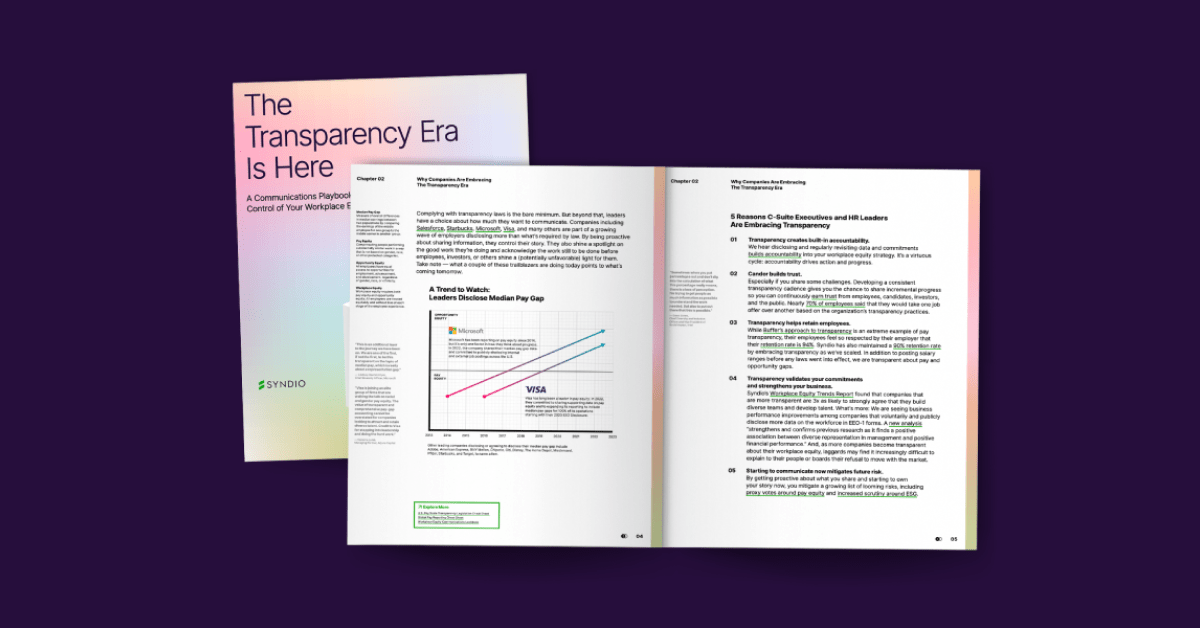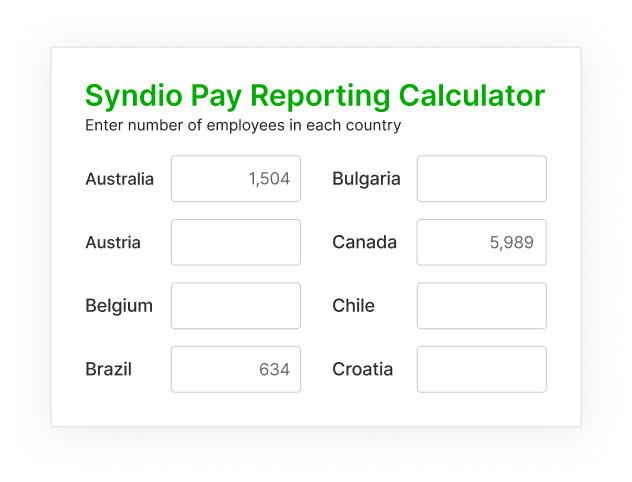EU Pay Transparency Directive: How to Prepare — Now
The clock is ticking for global companies: the EU's groundbreaking EU Directive on Equal Pay and Transparency demands unprecedented transparency in pay and career progression. With mandates to disclose pay scales on job postings, report pay gaps, and communicate openly about pay and career progression, the time for companies to act is now.
Though the first report isn’t due until 7 June, 2027, it’s based on pay data from 2026 — meaning you have just two annual compensation cycles to correct issues before they are baked into your public pay reporting. Many other components of the Directive, including pay scale transparency and right to information, are likely to kick in before the due date
Need a plan? Syndio simplifies compliance. Syndio’s experts and leading Workplace Equity Analytics Platform can help you straighten out your data, flag inequities, and incrementally close gaps so your first report can tell a proactive story of progress.

Summer Series: EU Directive Pay Transparency Roundtables
London | Amsterdam | Paris | Dublin | Zurich | Munich/Frankfurt | Milan | Helsinki | Stockholm | Warsaw
We're rolling out the red carpet for HR, Total Rewards/Comp, and Legal leaders across Europe to exchange best practices for meeting pay transparency demands. Don't miss this chance to connect and learn with peers in your city.
Blog | Cheat Sheet
Understand the 5 key requirements
Get a 101-level overview of the main requirements of the EU Pay Transparency Directive.
Blog | FAQ
All your EU Directive questions, answered
Discover answers to common questions about compliance, timelines, definitions, and more.
Guide
Communicate about pay with confidence
Explore pay real-world pay transparency examples and communications advice.
Find out where you owe pay reports
Use our free Global Pay Reports Calculator for a list of countries where you owe reports — then get more details about deadlines and submission requirements.
Syndio can help you comply with the EU Pay Transparency Directive
Don’t run out of time to correct pay gaps incrementally, in the most efficient and cost-effective way, before you have to share them publicly. Syndio’s Workplace Equity Analytics Platform speeds up analyses, offers remediation strategies, and streamlines reporting.
From there, you'll be well positioned to address the other requirements of the Directive, from posting equitable salaries to confidently communicating about pay — whether responding to an individual employee's questions or sharing a broader corporate narrative.
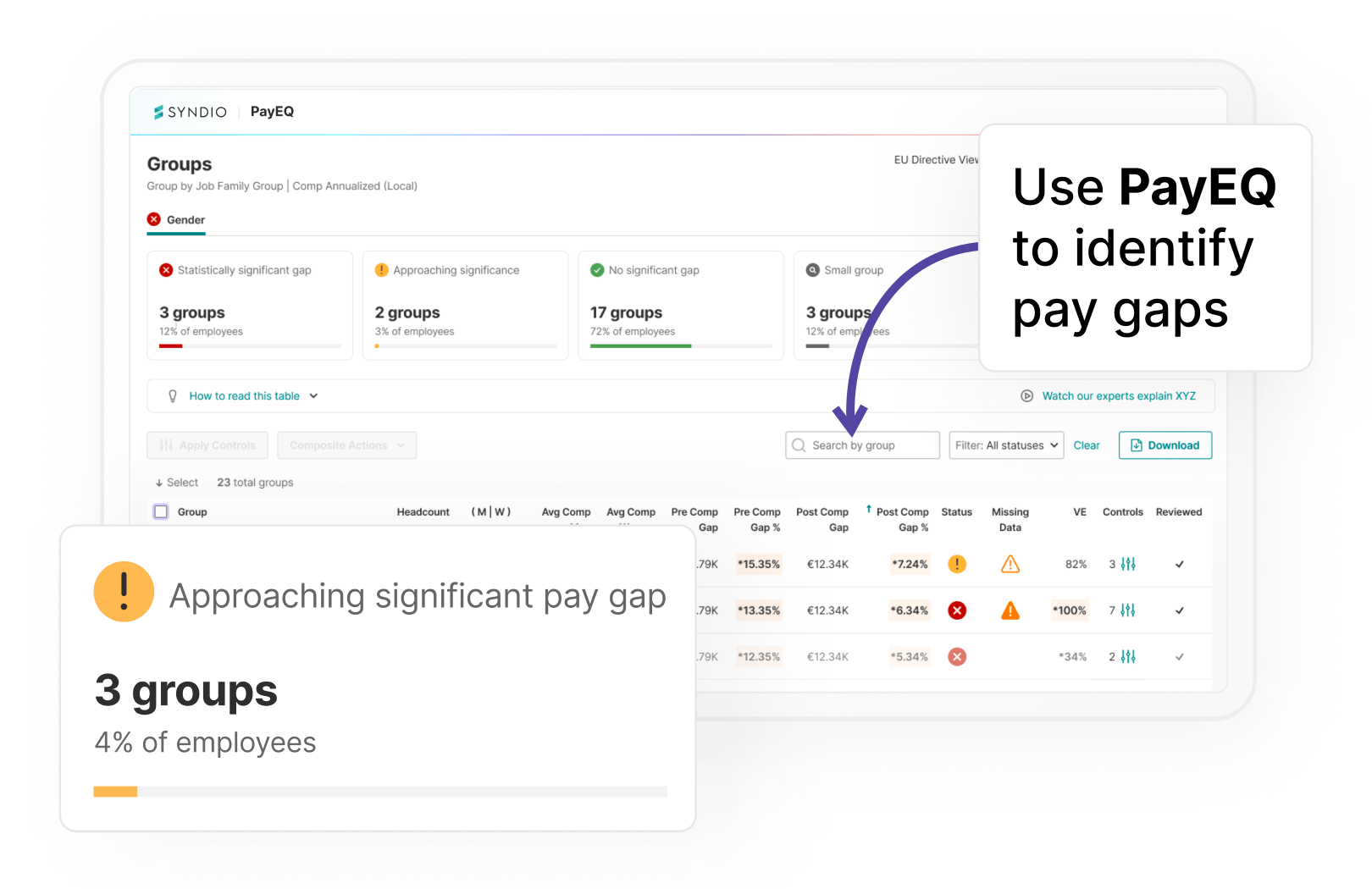
PayEQ®
Identify gender pay gaps greater than 5%, apply controls to flag the factors that impact pay, and test budgets for closing pay gaps.
Pay Finder™
Prevent new gaps by ensuring every pay decision is equitable.
Global Pay Reports
Compile the gender pay gap metrics you need to report on and get reports for 29 jurisdictions worldwide.
Communications expertise
Partner with Syndio to develop a communications strategy ahead of your first report.
2019-01-01
PayEQ®
Identify gender pay gaps greater than 5%, apply controls to flag the factors that impact pay, and test budgets for closing pay gaps.
2020-01-01
Pay Finder™
Prevent new gaps by ensuring every pay decision is equitable.
2021-01-01
Global Pay Reports
Compile the gender pay gap metrics you need to report on and get reports for 29 jurisdictions worldwide.
2021-01-01
Communications expertise
Partner with Syndio to develop a communications strategy ahead of your first report.
Want to stay up-to-date on what’s new at Syndio?
We’ll deliver news and content straight to your inbox.

About Syndio
Syndio’s mission is to empower employers to eradicate unlawful pay disparities due to gender, race, and ethnicity and make ongoing compensation decisions informed by fairness and equity data. Syndio customers drastically reduce legal risk, saving millions in ongoing remediation and create a positive brand reputation, which helps attract and retain top talent at every level of the business. Syndio is proud to partner with brands who are leading the way in equity and setting the standard for workplace fairness.
